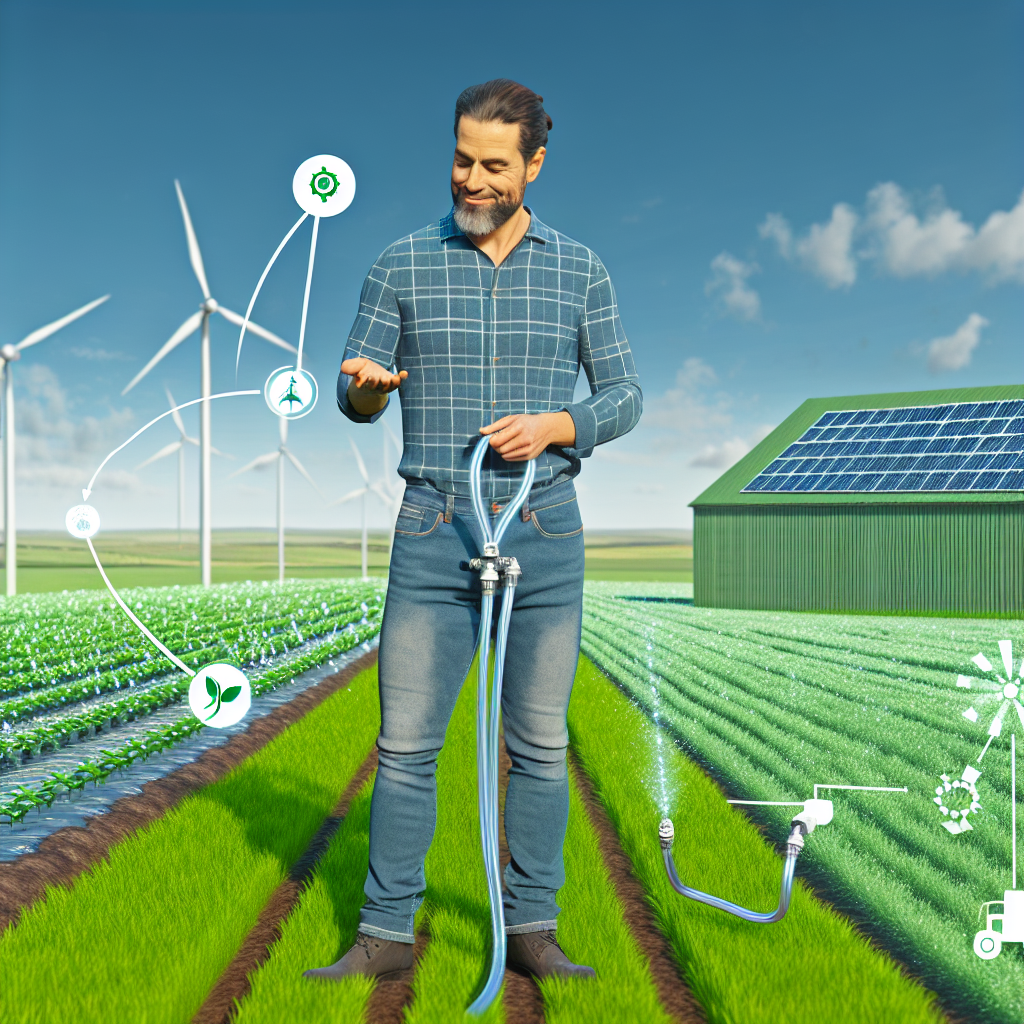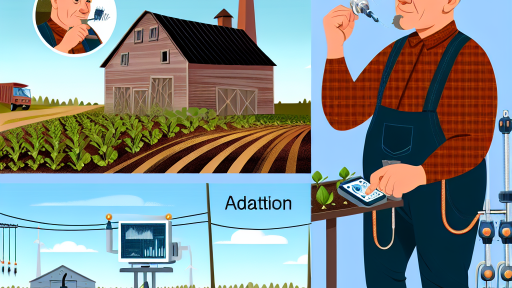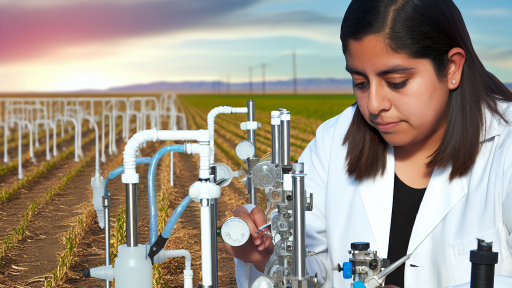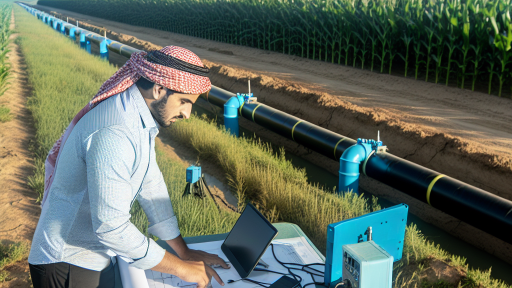Introduction to Climate Resilience in Agriculture
Climate resilience in agriculture refers to the ability of farms to withstand adverse climate conditions.
This concept increasingly gains importance as weather patterns shift due to climate change.
Farmers face numerous challenges, including drought, floods, and unpredictable weather events.
Investing in climate resilience protects crops and livestock from these threats.
Additionally, it enhances food security and supports rural economies.
Understanding this crucial aspect requires an exploration of effective strategies for implementation.
Defining Climate Resilience
Climate resilience encompasses various practices that help agriculture adapt to changing climates.
These practices include crop diversification, soil management, and water conservation techniques.
Furthermore, using technology plays a significant role in enhancing resilience through data-driven decisions.
Importance of Climate Resilience
Farms with strong climate resilience are better equipped to face environmental challenges.
They can maintain productivity even when traditional agricultural methods fail.
Moreover, these farms contribute to sustainable food systems and environmental health.
Strategies for Building Climate Resilience
Farmers can adopt several strategies to enhance their resilience to climate change.
- Diverse cropping systems can prevent total crop loss during adverse conditions.
- Implementing water-efficient technologies reduces the impacts of water scarcity.
- Utilizing native plant species fosters biodiversity and improves ecosystem stability.
- Investing in soil health promotes long-term agricultural success.
Each of these strategies offers both immediate and long-term benefits.
The Role of Policy and Community Support
Effective policies that support climate-resilient practices are essential for agricultural success.
Transform Your Agribusiness
Unlock your farm's potential with expert advice tailored to your needs. Get actionable steps that drive real results.
Get StartedGovernment programs can provide financial assistance and resources for farmers.
Furthermore, community engagement fosters knowledge sharing and collective action.
By working together, communities can strengthen their overall resilience to climate change.
Understanding the Economic Impacts of Climate Change on Farming
Overview of Climate Change Effects
Climate change significantly affects agricultural productivity.
Farmers face increasing weather variability and extreme conditions.
These changes disrupt planting and harvesting schedules.
Consequently, crop yields may decline in affected regions.
Financial Consequences for Farmers
Farmers incur higher costs due to climate-induced challenges.
They may need to invest in new technology and equipment.
Additionally, insurance premiums can rise as risks increase.
These financial burdens can lead to decreased profit margins.
Market Demand and Crop Prices
Market demand fluctuates due to climate-related supply issues.
Extreme weather events can reduce the availability of key crops.
This scarcity often drives up prices for consumers and farmers alike.
Consequently, managing market volatility becomes essential for stability.
Long-term Implications for Sustainability
Climate change can compromise the long-term viability of farms.
A loss of biodiversity affects ecosystem services crucial for farming.
Soil degradation and water scarcity can result from intense farming practices.
Ultimately, this jeopardizes future agricultural productivity and food security.
Strategies for Economic Resilience
Farmers should consider adopting climate-smart agricultural practices.
Diversifying crops can enhance resilience against market shifts.
Implementing water conservation techniques can also be beneficial.
Additionally, investing in renewable energy sources can lower costs.
Investment Opportunities in Climate-Resilient Practices
Introduction to Climate Resilience
Climate resilience empowers farmers to adapt to changing weather patterns.
Showcase Your Farming Business
Publish your professional farming services profile on our blog for a one-time fee of $200 and reach a dedicated audience of farmers and agribusiness owners.
Publish Your ProfileThis adaptability boosts farm profitability over time.
Investments in climate-resilient practices yield significant economic benefits.
Agroecological Practices
Agroecology emphasizes sustainable farming techniques.
Cover cropping improves soil health and fertility.
This practice enhances crop yield and reduces fertilizer costs.
Additionally, crop rotation disrupts pest cycles and boosts biodiversity.
Farmers who adopt these techniques see increased long-term profits.
Water Management Innovations
Efficient water management is crucial for climate resilience.
Investing in drip irrigation saves water and enhances crop production.
Furthermore, rainwater harvesting systems provide additional water resources.
These systems help farmers maintain yields during dry seasons.
Soil Health Improvement Strategies
Healthy soil is foundational for successful agriculture.
Implementing no-till farming preserves soil structure and fertility.
This practice reduces erosion and enhances moisture retention.
Moreover, adding organic matter improves soil biodiversity.
Farmers experience both increased yields and reduced input costs.
Renewable Energy Utilization
Transitioning to renewable energy sources is increasingly economical.
Solar panels can power irrigation systems and farm operations.
Wind energy can reduce dependence on fossil fuels.
Investment in renewable energy leads to lower operational costs.
Consequently, farmers enjoy greater financial stability.
Collaborative Efforts and Funding
Collaboration with government bodies enhances funding opportunities.
Grants and incentives are available for sustainable agriculture projects.
Moreover, joining cooperatives can lower costs for farmers.
Farmers can collectively invest in climate-resilient technologies.
This cooperation amplifies their financial resilience against climate impacts.
You Might Also Like: Choosing Flood-Resistant Crop Varieties for Your Farm
Case Studies: Successful Implementation of Climate Resilience Strategies
Innovative Water Management in Brazil
Agricultural producers in Brazil adopted innovative water management techniques.
This approach aimed to combat increasing drought conditions.
Methods included drip irrigation and rainwater harvesting systems.
Farmers observed significant improvements in crop yields.
Additionally, they reported reduced water consumption rates.
Crop Diversification in California
Farmers in California embraced crop diversification for resilience.
This strategy involved growing a variety of crops in rotation.
Diverse crops helped mitigate risks associated with pests and diseases.
Farmers enjoyed increased soil health and lower fertilizer costs.
Moreover, this approach enhanced their market opportunities.
Agroforestry in Kenya
In Kenya, agroforestry emerged as an effective climate resilience strategy.
Farmers integrated trees within their agricultural systems.
This practice improved biodiversity and soil fertility.
Showcase Your Farming Business
Publish your professional farming services profile on our blog for a one-time fee of $200 and reach a dedicated audience of farmers and agribusiness owners.
Publish Your ProfileIt also provided shade and reduced soil erosion.
Farmers highlighted enhanced food security through this method.
Community-Based Adaptation in Bangladesh
Bangladesh implemented community-based adaptation initiatives to address climate challenges.
Local farmers received training in sustainable agricultural practices.
They adopted flood-resistant crop varieties to increase resilience.
This empowerment led to stronger community ties and knowledge sharing.
Farmers expressed gratitude for improved crop reliability and income.
Technological Integration in Australia
Australian farmers leveraged technology to enhance climate resilience.
They used data analytics for better decision-making in farming.
This included monitoring weather patterns and soil conditions.
Farmers achieved efficient resource allocation and planning.
Ultimately, these advancements boosted overall productivity.
Discover More: Building Resilient Farms Amid Climate Uncertainty
Cost-Benefit Analysis of Investing in Climate Resilience
Understanding Climate Resilience
Climate resilience involves the ability of farming systems to adapt to changing climate conditions.
Investing in climate resilience protects crops from extreme weather events.
This investment also ensures sustainable production and livelihoods for farmers.
Cost Considerations
Initial setup costs for climate-resilient practices can be significant.
Farmers might incur expenses related to new technologies and infrastructure.
However, these costs often decrease over time through improved efficiency.
Long-term savings come from reduced crop losses and better soil management.
Benefits of Climate Resilience
Investing in climate resilience grants access to new markets.
Products from resilient farms can command higher prices due to sustainability labels.
This practice also enhances a farm’s yield stability in unpredictable weather.
Additionally, it improves soil health, leading to better crop production in the future.
Case Studies
Farmers in the Midwest have reported increased productivity after adopting cover crops.
Crops like these enhance soil moisture retention and reduce erosion.
Similarly, growers in California have benefited from implementing drip irrigation systems.
These systems conserve water while maintaining crop quality.
Long-Term Impact
Investing in climate resilience strengthens community ties and local economies.
Resilient farms create jobs and promote food security in the region.
Over time, these investments contribute to overall environmental health.
As a result, greater biodiversity can flourish, benefiting ecosystems.
Strategic Investment for Future Stability
Ultimately, investing in climate resilience is not just an expense; it is a strategic decision.
It fosters economic stability while preparing farmers for future challenges.
As climate change intensifies, these investments will become increasingly essential.
Find Out More: Assessing the Financial Impacts of Climate Variability on Farms

Government Policies and Incentives for Climate-Resilient Farming
Understanding the Importance of Climate Resilience
Climate resilience in farming is crucial for sustainable agriculture.
It helps farmers withstand extreme weather events.
Additionally, resilient practices protect crops and livestock from risks.
Current Government Policies Supporting Farmers
Governments worldwide are implementing supportive policies.
Showcase Your Farming Business
Publish your professional farming services profile on our blog for a one-time fee of $200 and reach a dedicated audience of farmers and agribusiness owners.
Publish Your ProfileThese policies often include grants and subsidies for climate-resilient practices.
For example, the Sustainable Agriculture Research and Education program provides funding.
Farmers can also access low-interest loans for renewable energy projects.
Encouraging Innovation Through Incentives
Incentives encourage innovative farming techniques and technologies.
Programs like the Environmental Quality Incentives Program support conservation practices.
Farmers receive funding to implement projects that enhance resilience.
Moreover, tax credits are available for investments in sustainable equipment.
Collaboration Between Government and Farmers
Collaboration enhances the effectiveness of these policies.
Local governments often partner with farmers to create specific programs.
Such partnerships improve land management and water conservation practices.
They also facilitate knowledge-sharing and training opportunities.
The Role of Research and Education
Research institutions play a vital role in promoting climate resilience.
They provide vital data on climate impacts and risk assessments.
Furthermore, educational programs inform farmers about best practices.
Access to knowledge helps farmers adopt effective climate strategies.
Future Directions in Policy Development
Future policies should integrate climate resilience into all farming sectors.
Equally, policies must emphasize sustainable practices and innovation.
Increased funding will enhance resilience projects’ outreach and effectiveness.
Ultimately, strong policies can elevate farm economics while protecting the environment.
Explore Further: Precision Agriculture Tools for Better Water Management
Technological Innovations to Enhance Climate Resilience in Agriculture
Advanced Climate Monitoring Systems
Farmers now utilize advanced climate monitoring systems to predict weather patterns.
These systems provide real-time data on temperature, humidity, and precipitation.
Consequently, farmers can make informed decisions regarding crop management.
For instance, precision agriculture tools enable better irrigation scheduling.
This reduces water wastage and enhances crop yield during dry spells.
Genetic Engineering and Crop Varieties
Genetic engineering plays a crucial role in developing climate-resilient crops.
Scientists create varieties that withstand extreme temperatures and drought.
These crops often require fewer inputs, providing economic benefits to farmers.
Moreover, farmers can sustain production levels under challenging conditions.
Overall, this innovation significantly boosts farm economics and food security.
Drones and Aerial Imagery
Drones equipped with advanced sensors enhance farm management capabilities.
These technologies allow for detailed assessments of crop health and soil conditions.
Farmers can identify areas that require urgent attention, optimizing resource allocation.
As a result, they can apply fertilizers and pesticides more efficiently.
This minimizes environmental impact while improving farm profitability.
Vertical Farming Techniques
Vertical farming offers innovative solutions for urban agriculture.
This method utilizes limited space and resources effectively.
By stacking crops vertically, farmers increase yields while reducing water use.
Furthermore, vertical farms can be located near urban centers, reducing transportation costs.
Thus, they play a key role in promoting sustainable food production.
Showcase Your Farming Business
Publish your professional farming services profile on our blog for a one-time fee of $200 and reach a dedicated audience of farmers and agribusiness owners.
Publish Your ProfileSmart Irrigation Management
Smart irrigation systems revolutionize water management in agriculture.
These technologies adjust water supply based on real-time weather data.
By minimizing water usage, farmers can significantly cut operational costs.
Moreover, smart systems maintain optimal soil moisture levels for plant growth.
This ensures higher crop yield and resilience against climate variability.
Sustainable Pest Management Technologies
Innovative pest management technologies reduce reliance on chemical pesticides.
Integrated pest management combines biological control and technology.
This approach targets specific pests while preserving beneficial insects.
Farmers can improve ecosystem health and farm profitability through these methods.
Ultimately, this promotes sustainable practices in agriculture.
Building Community Support for Climate Resilience Initiatives
Creating Awareness
Community awareness is vital for supporting climate resilience initiatives.
Start by organizing workshops and informational sessions.
Invite experts to discuss the impact of climate change on agriculture.
Use local media to disseminate information effectively.
Leverage social media platforms to engage with the community.
Engaging Stakeholders
Involve key community stakeholders in climate resilience planning.
Collaborate with local farmers, businesses, and NGOs.
Hold regular meetings to encourage open discussions.
Encourage stakeholders to share their insights and concerns.
Facilitate partnerships to strengthen initiatives.
Fostering Participation
Active participation enhances community investment in resilience efforts.
Promote volunteer programs for community members.
Offer incentives for participation, such as workshops or resources.
Encourage community-led projects that focus on local needs.
Celebrate local success stories to motivate further involvement.
Building Relationships
Strong relationships among community members can drive initiatives forward.
Create networking events for farmers and stakeholders.
Establish a community advisory board for ongoing support.
Encourage mentorship programs between experienced and new farmers.
Establish partnerships with local schools for educational programs.
Securing Funding
Identify funding opportunities to support resilience initiatives.
Research grants available for agricultural and environmental projects.
Organize community fundraising events to supplement funding.
Engage local businesses for sponsorships and contributions.
Provide transparent reports on funding utilization to build trust.
Additional Resources
Cover Cropping to Improve Climate Resilience | USDA Climate Hubs




